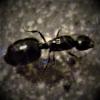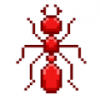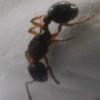Acrylic nests do dry out very quickly for a few reasons. One, is that they typically have very tiny reservoirs that only hold a couple milliliters of water in a sponge. Second, hydration occurs when the sponge is oversaturated, and excess water spreads out in between the layers of acrylic via capillary action. For a short time, this results in acceptable levels of humidity for many species of ants, as some airflow between the layers is blocked by the water, and some of the water evaporates into the nest. Water also evaporates outside the nest, and so the user is generally required to inject water into these nests every 2 or 3 days.
I personally don't like the fact that water spreads out in between the layers, because, while some makers have overcome this with small design changes, the effect can cause some nests to look very dirty over time, like in the example below:

Mechanically, thin acrylic sheet is not a material intended to be in contact with high relative humidity levels for extended durations, as water is absorbed into the material in a non-uniform manner, which can result in warping. Most acrylic nests I've seen do not provide uniform clamping force for the screws to overcome this effect, so the pieces will sit less evenly over time, resulting in more water getting between the layers, and the nest drying out even faster.
Edited by drtrmiller, November 18 2017 - 1:58 AM.



















